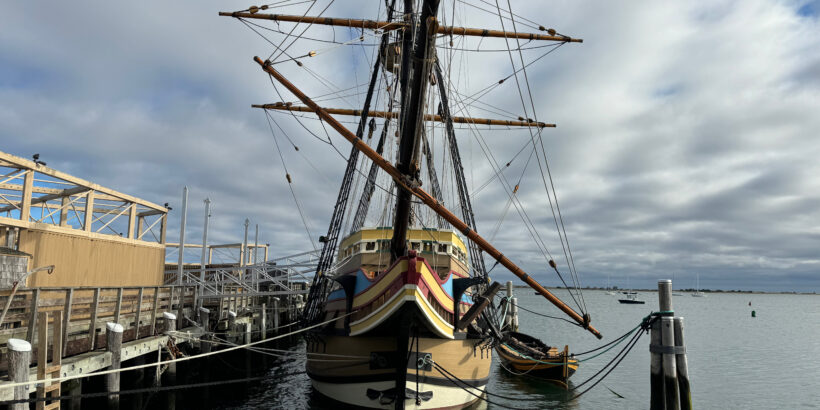Plymouth, Massachusetts is famous for being the landing spot of the intrepid Pilgrims way back in 1620.
In and around this historic town, you’ll come across various attractions that pay homage to that momentous occasion. From the iconic Plymouth Rock to the immersive Plimoth Patuxet Village, there’s no shortage of history to soak up. But amidst all these remarkable sites, one spot stands out – the Mayflower II.
In this article, we’re about to dive deep into the captivating history of the Mayflower II, giving you a sneak peek into what you can expect when you venture out to explore this maritime marvel.
Table of Contents
What is the the Mayflower II?
The Mayflower II is a faithful reproduction of the original Mayflower, the ship that transported the Pilgrims from Plymouth, England, to Plymouth, Massachusetts, in 1620.
Visitors can enter the ship and explore its quarters to see what it would’ve been like to be on board this historic ship while learning all about the Pilgrims and their journey via interpretive guides.
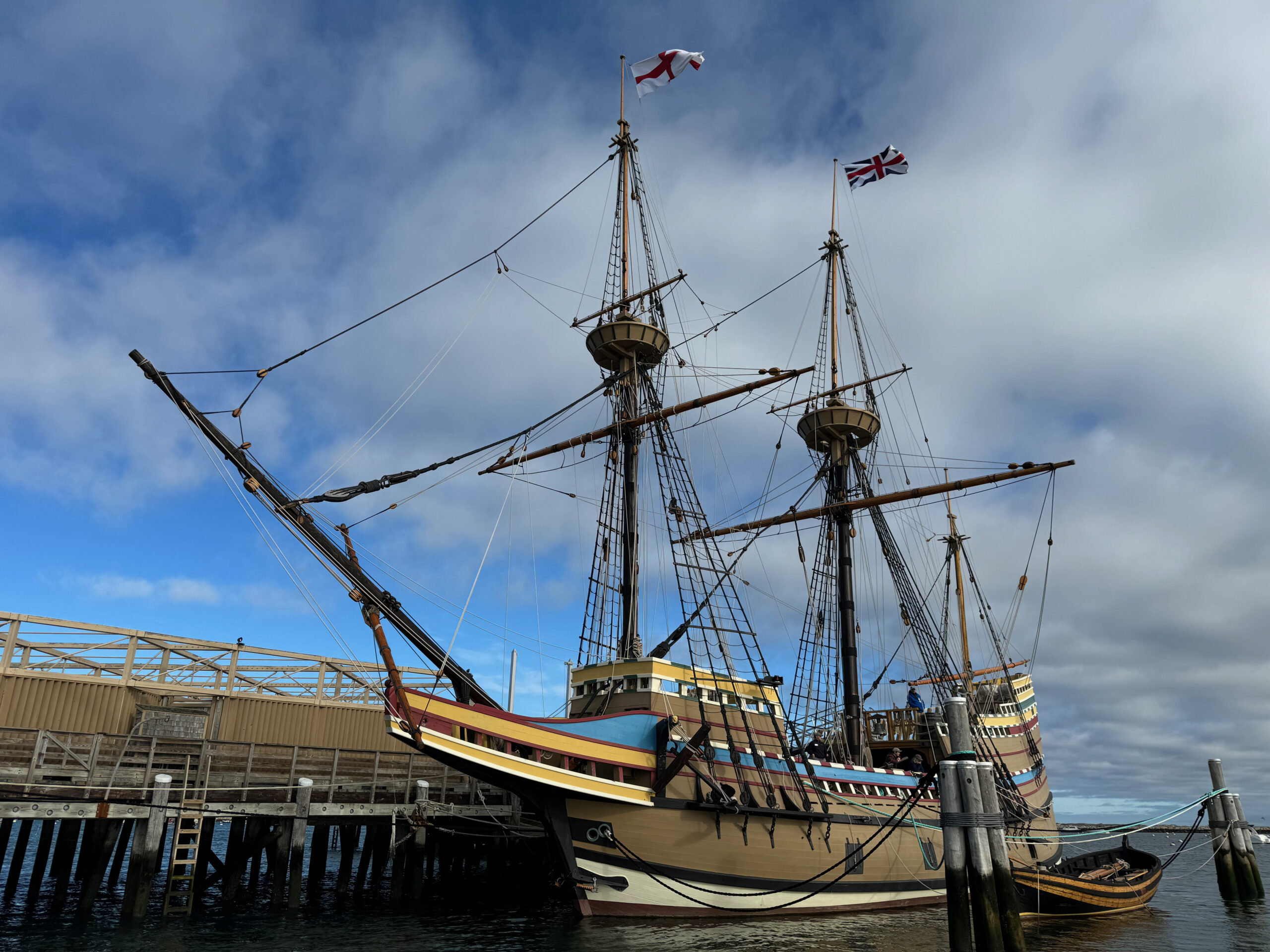
A brief history of the Mayflower II
The Mayflower II, a charming reproduction, took shape in the shipyards of Devon, England during the mid-1950s after some very coincidental timing.
Back in 1951, when Plimoth Patuxet, then known as Plimoth Plantation, set its sights on recreating a ship akin to the original Mayflower, they enlisted the services of naval architect, William A. Baker, to spearhead the research and design efforts.
What’s intriguing is that simultaneously, across the pond in England, Warwick Charlton was nurturing a similar project under the banner of Project Mayflower Ltd. Very serendipitous timing.
Charlton’s team stumbled upon an article written by Baker, and unbeknownst to Plimoth Patuxet, the seeds of a fateful collaboration were sown.
After the two parties finally connected, a dynamic new partnership took shape. Plimoth Patuxet shared Baker’s research and plans with Project Mayflower Ltd., setting the stage for the remarkable resurrection of the Mayflower II.
They didn’t have any original blueprints of the Mayflower lying around though. That’s because frankly, it wasn’t considered a big deal back in the day.
But those savvy museum curators managed to piece together plans based on what typical 17th-century English merchant vessels from that era looked like.
Armed with these designs and some good old English shipbuilding know-how, they crafted a pretty darn accurate reproduction (not a replica), complete with a few contemporary twists like electric lights.
She boasts robust oak timbers, rugged tarred hemp rigging, and stretches a generous 106 feet in length and spans 25 feet in width, tipping the scales at 236 tons. With three masts (mainmast, foremast, mizzen), a bowsprit, and a set of six sails, she’s quite the sight to behold.
But this ship was more than just a replica project. The Mayflower II served as a symbol of the special bond kept by the United Kingdom and the United States during the tumultuous times of World War II.
When the Mayflower II was all set to hit the high seas, it embarked on its journey on April 20, 1957, from Plymouth, Devon, retracing the arduous path of the original voyage across the vast Atlantic Ocean.
Guided by the skilled hand of Captain Alan Villiers, the ship encountered a twist as they neared the shores of Massachusetts.
A bad squall reared its head, prompting the captain to employ the same tactic described by William Bradford during the Pilgrims’ initial Atlantic crossing – the art of “lying ahull” or allowing the ship to drift with the wind and waves while taking no active steps to steer or control its movement.
Luckily for the captain and his crew, it worked.
With a dedicated crew of thirty-three men at the helm, the Mayflower II safely reached Plymouth, Massachusetts, on June 22, 1957. They were met by an enthusiastic throng of 25,000 adoring spectators, all eager to welcome this remarkable vessel and its brave voyagers to their new home.
The crew, at this point, hopped on board a reproduction of the original shallop that was used back in the day. This replica was rowed by none other than Harvard University’s rowing team, and they skillfully ferried Captain Alan Villiers and his crew to the welcoming shore.
Since then, the Mayflower II has taken a hiatus for some necessary TLC and maintenance. So, don’t be shocked if, down the line, it temporarily disappears from the harbor, though it seems to be likely it will remain in place for a while.
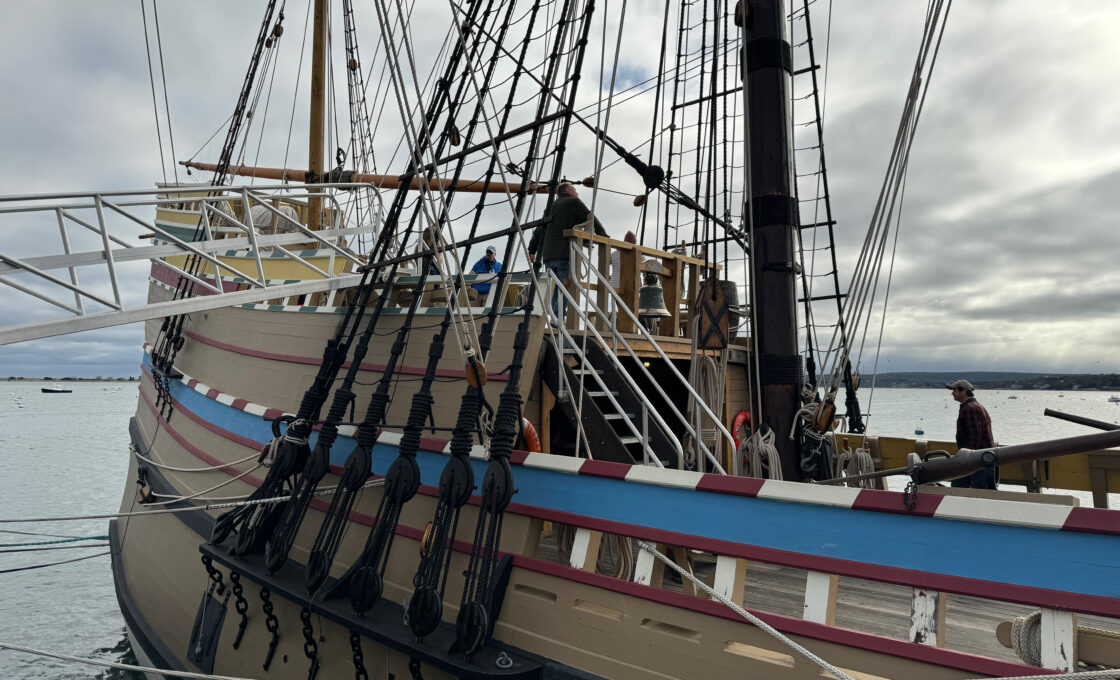
How to visit the Mayflower II
The Mayflower II is located at: Water St, Plymouth, MA 02360.
There are some parking lots in the area as well as the street parking and you can’t miss the ship once you’re in the area but it is located right next to Plymouth Rock and some of the notable statues in the area.
For each adult, tickets will cost $17.95.
However, we purchased an annual pass that gave access to all of the Plymouth locations and gave us a nice discount on the Thanksgiving dinner so we ended up making some good savings. I’d highly recommend that option if it works for you.
Even if you don’t need the annual pass there are also packaged deals so you can get admission into several sites.
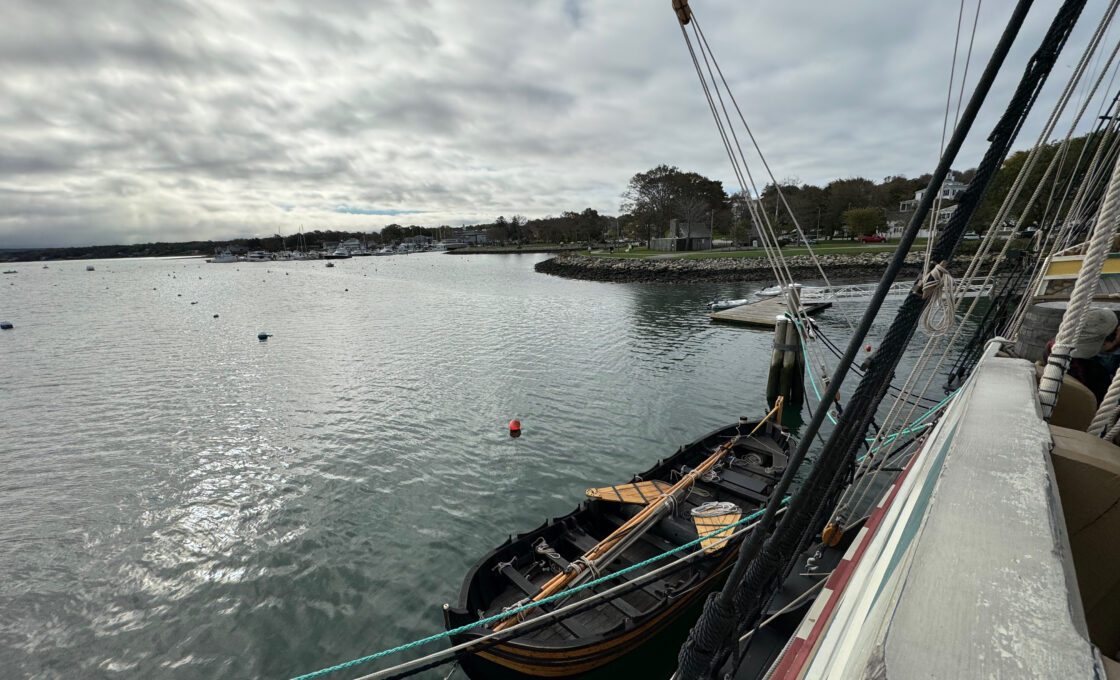
Experiencing the Mayflower II
We arrived on a crisp October morning, a fitting nod to the harsh weather the Pilgrims would have encountered when they reached these shores in December of 1620.
After a brief wait for the staff to get organized, we presented our annual membership pass, which we’d purchased earlier, and were among the first to step aboard.
Before setting foot on the ship, you’re treated to a lineup of informative panels and exhibits that offer deeper insights into the lives of the Pilgrims.
It’s your chance to brush up on your history, and if you’re lucky, you might cross paths with an interpretive guide who can field your questions.
And then, it’s time to step aboard the Mayflower II!
As you approach the vessel, you’ll likely be taken aback by just how compact it is. It’s a bit like first setting eyes on Plymouth Rock, but with way less of the let down factor.
Interestingly, when you stack up the Mayflower II against two of Christopher Columbus’s vessels, the Niña and Pinta, which measured a mere 50 to 70 feet from their bows to their sterns, you see that the Mayflower II was likely twice as long as these explorer’s ships.
Once you’re on deck, welcoming guides await to provide you with an orientation of the ship.
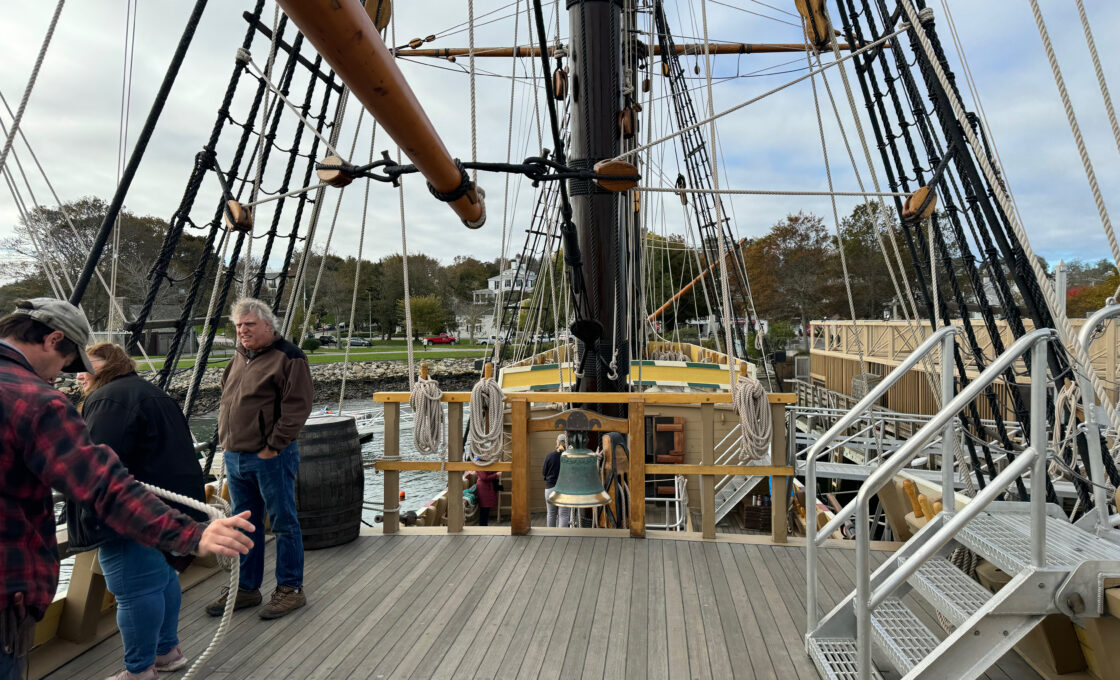
During our visit, we encountered a variety of knowledgeable interpretive guides who delved into the Pilgrims’ history and journey.
It was a delight to have the opportunity to fire off plenty of questions and unravel the myths and misconceptions surrounding these early settlers and their motivations. Moreover, it was a chance to dive into the intricate details of their voyage and their initial interactions with Native Americans.
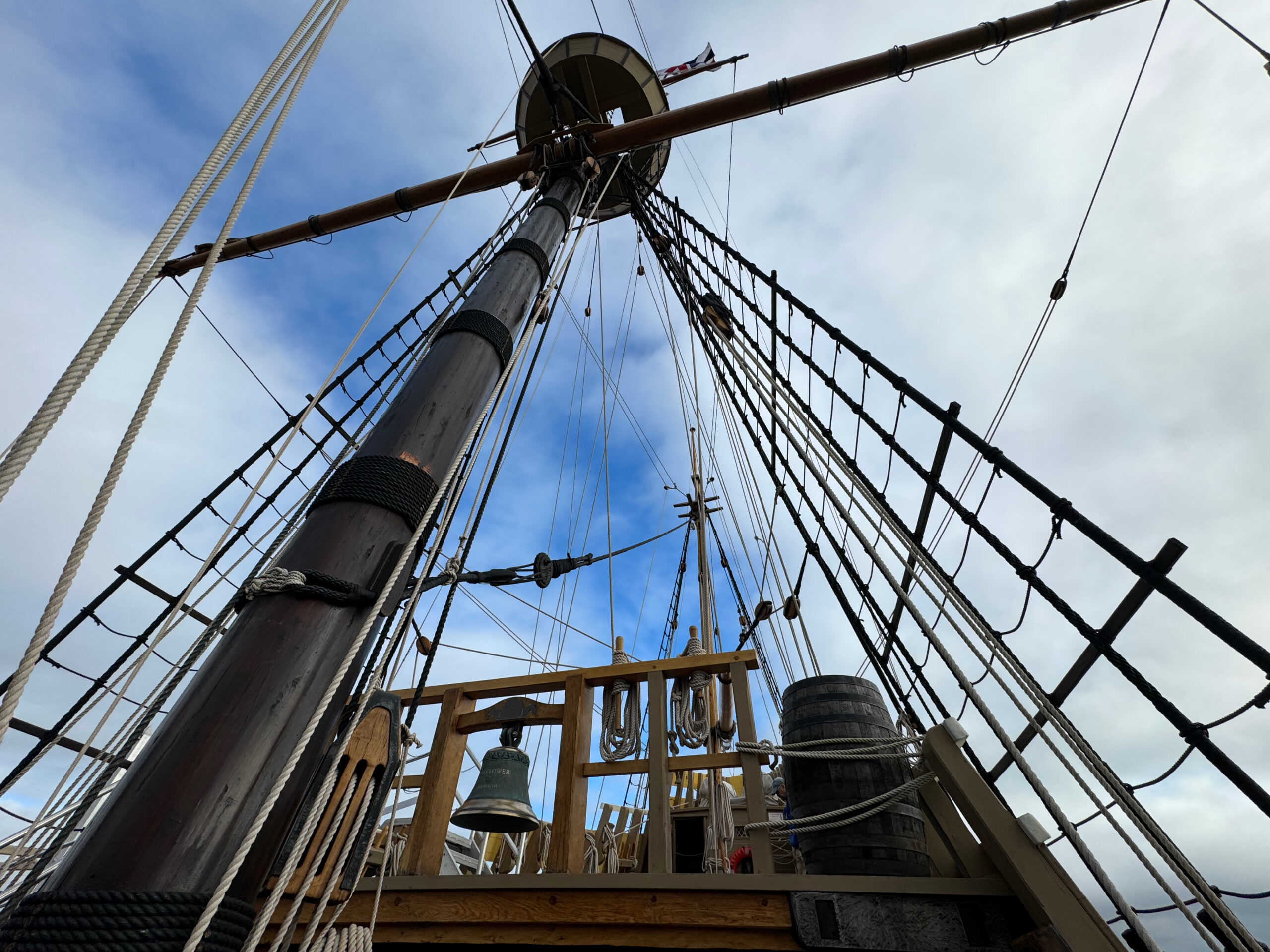
You’ll get the chance to explore various areas of the ship, including the captain’s quarters, where you can envision how they steered this vessel across the tumultuous Atlantic.
Venture below deck, and you’ll get a taste of the living conditions the Pilgrims endured.
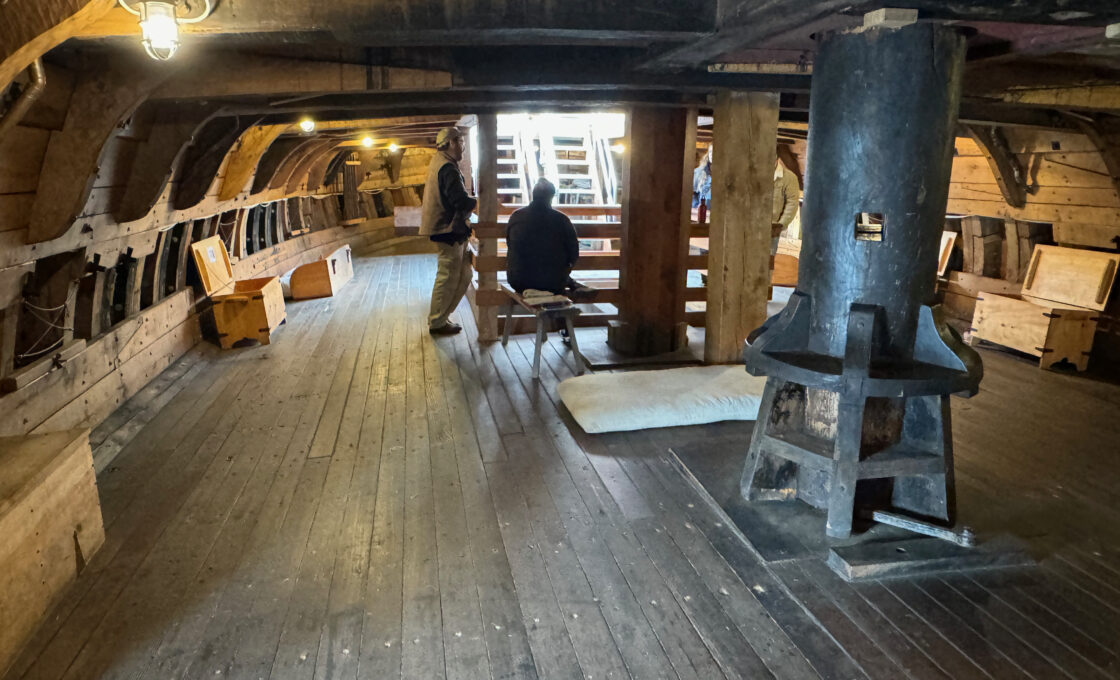
One unfortunate reality was that one of the ships meant to accompany the Mayflower II was unable to sail with them, resulting in cramped quarters. As you make your way down there, you’ll truly grasp just how confined it must have been for them.
After you disembark from the ship, there are additional exhibits waiting for your exploration before you call it a day. I’d suggest taking a peek at Plymouth Rock if you haven’t already, even though it’s fair to say that some might find it a bit underwhelming.
In the vicinity, you can also find some intriguing statues to admire, adding a touch of historical charm to your visit.
Final word
I had a thoroughly enjoyable time delving into the Mayflower II. The interpretive staff truly shine when it comes to fielding questions and unraveling the intricate history of the Pilgrims and their legendary vessel, the Mayflower.
Although the ship itself isn’t the largest, you’ll find that it doesn’t take too long to explore. But if you arrive with a curious spirit and a sackful of questions, you’re bound to extract even more from the experience.
Daniel Gillaspia is the Founder of UponArriving.com and the credit card app, WalletFlo. He is a former attorney turned travel expert covering destinations along with TSA, airline, and hotel policies. Since 2014, his content has been featured in publications such as National Geographic, Smithsonian Magazine, and CNBC. Read my bio.

